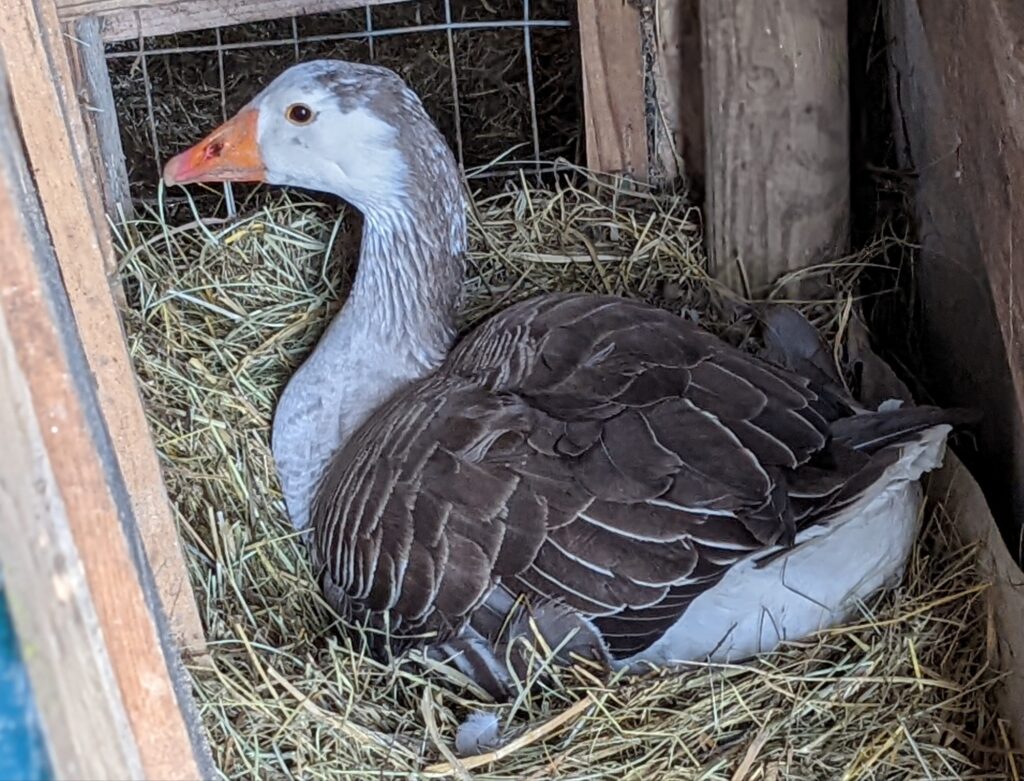
It’s a momentous day here on the farm: the geese have laid their first eggs of the season! I always enjoy finding first eggs, whether from a new or resuming layer. And I really enjoy finding a surprise, like I did this morning.
Generally speaking, the geese lay for a fairly short period from spring through summer. Depending on the timing of when a new layer reaches point of lay (POL), it’s also possible that a goose may not lay until her second year. Because our new layers are last spring’s hatch, they reached POL in time to begin their egglaying this year.
Having raised geese for a few years now, I know to look for the signs that the girls are going to either begin (first time layers) or resume laying (mature layers): depressions dug into the coop floor, nesting behavior, and mating. The geese have been engaging in breeding behavior for the last few weeks, so I knew laying wasn’t far behind.
Each morning, as I let the geese out of their coop, I check to see if there are any eggs. New layers may drop their eggs wherever they are – and sometimes that’s right in front of the pop door, where the geese rushing out kick it down the ramp…which is not good for the egg. With time, though, even the girls who seem surprised by eggs popping out of their bodies figure out what’s going on and lay their eggs in a nest. Where that nest may be, however, is another story.
Today, the girls rushed out and I saw that a depression had been dug into the shavings in the coop – a nascent nest. One goose immediately ran to a secluded spot in the barn that already had a thick layer of hay on the floor. She began getting herself situated comfortably on her nest – and then another goose decided that she wanted to lay in that nest, too.
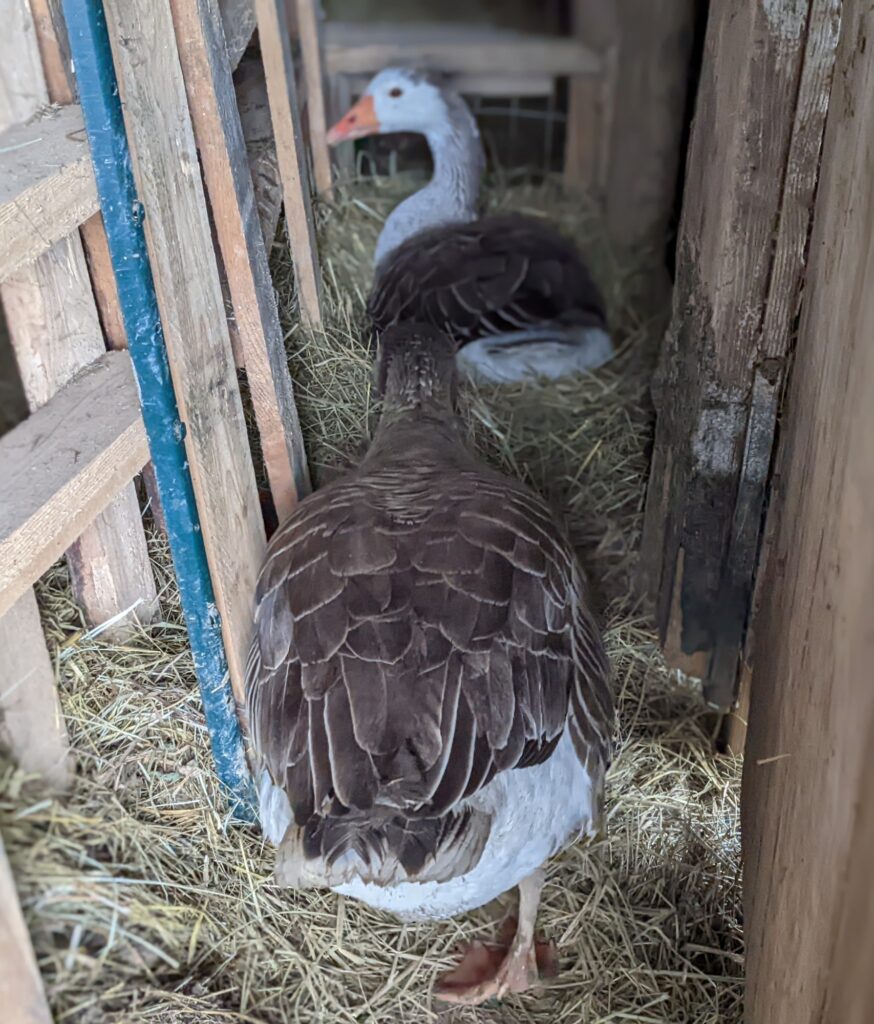
The two geese jammed themselves into that small area, seemingly happy. One began to pull hay from the nest and cover the other with it. I continued with my morning chores, trying not to disturb them (new layers can be scared off their nests more easily than experienced layers). It may take hours for a goose to lay her egg, so I decided that I would check on the nest again a few hours later.

When I returned – about three hours later – to check on the nest, the geese had left it. A visual inspection showed nothing out of the ordinary, but I know their tricks, so I began to dig around in the hay. To my delight, I discovered one big egg (likely from a mature layer) and a slightly smaller one buried very well under the hay, completely camouflaged. Two eggs in one day!
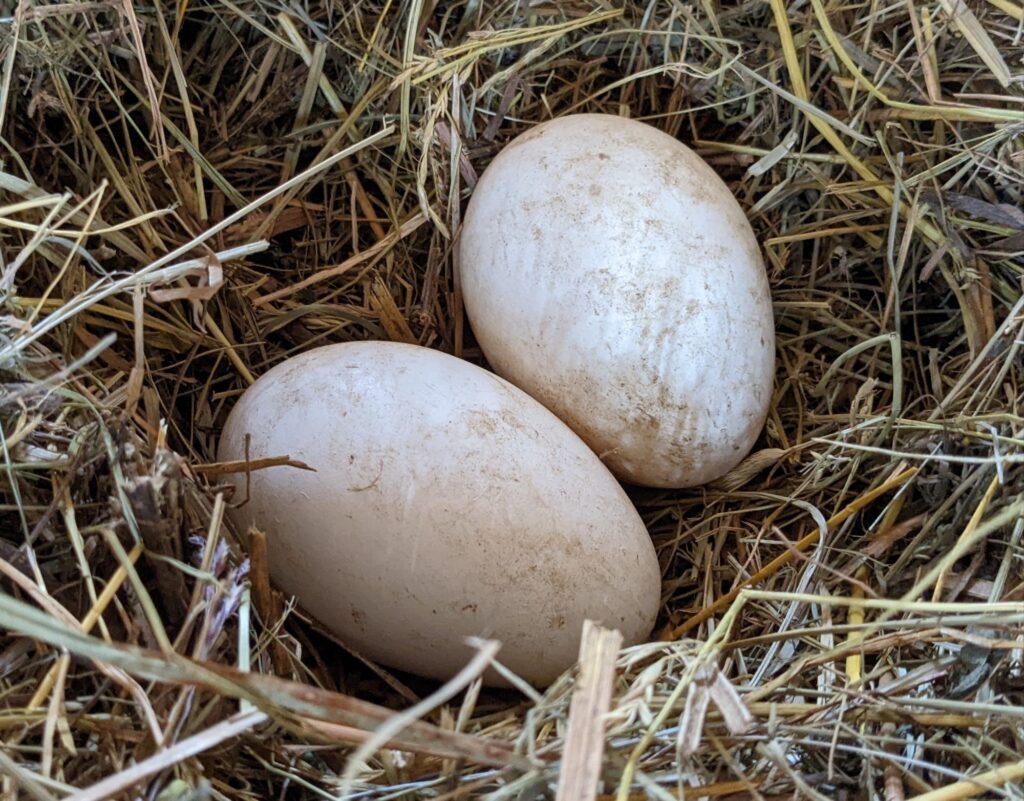
I took those eggs back to the house, but couldn’t shake a nagging concern that an egg may have been laid in the coop, too, and I didn’t want it to be there when the geese were secured again at dusk. For peace of mind, I went back to the coop and dug around in the spots where the girls would typically tend to lay (corners), but found nothing, so I decided to check the hay nest in the barn again.
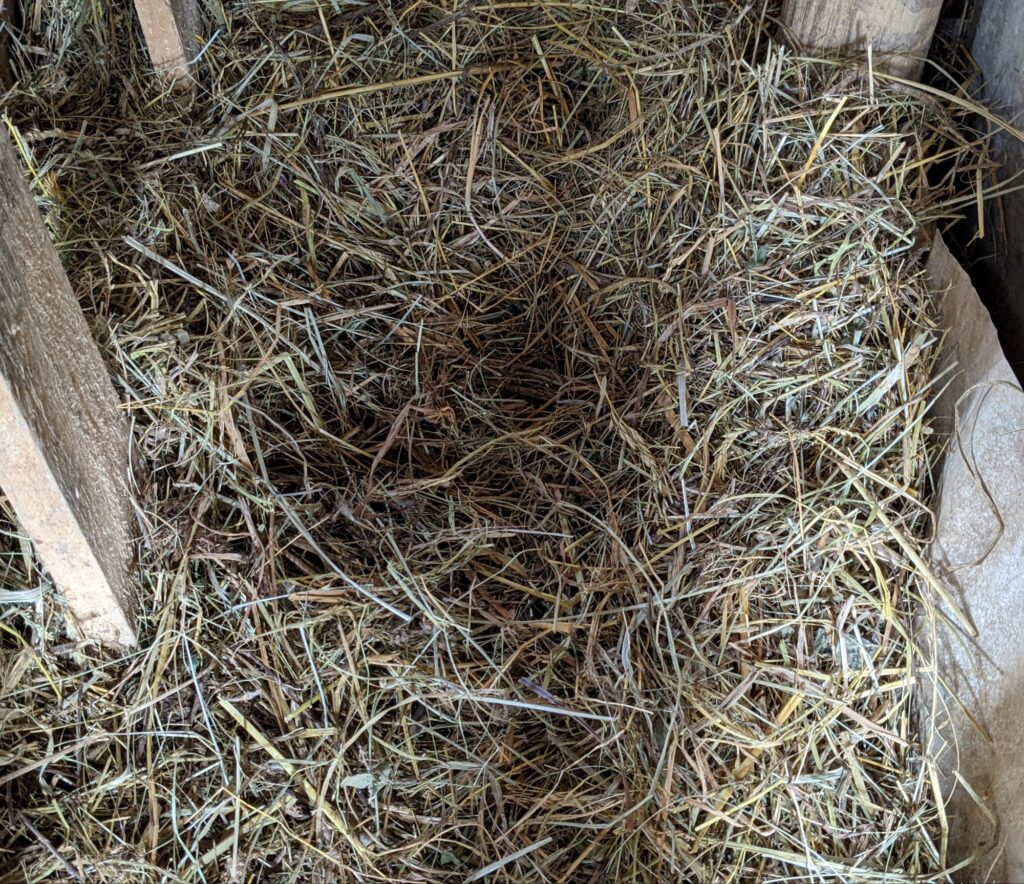
The nest is wide and the hay is thick, so I fished around in it. To my surprise, I found another goose egg – a torpedo this time. It’s clearly a first egg from a new layer because it had some streaks of blood on it (which isn’t unusual for new layers). Make that three eggs in one day!
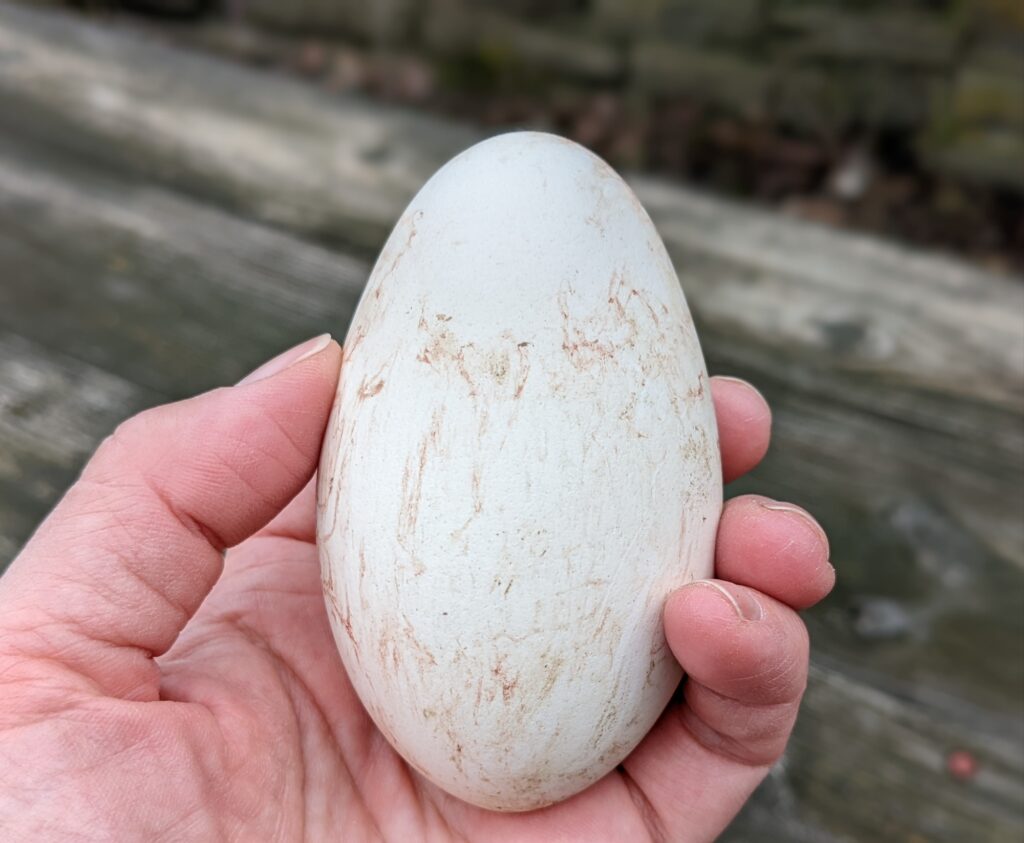
Because I prefer to set a group of eggs at a time to minimize staggered hatches, I’ll store the eggs for a few days until I have enough for the incubator. With goslings on the horizon, it’s really beginning to feel like spring…and I have a feeling that it’s going to be a very busy one here on the farm!
